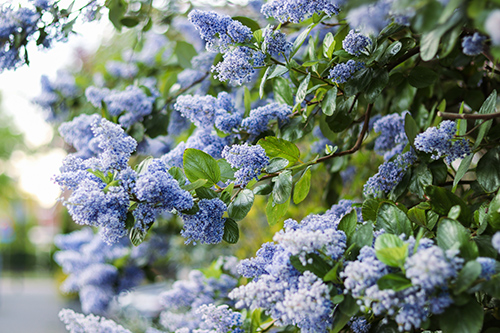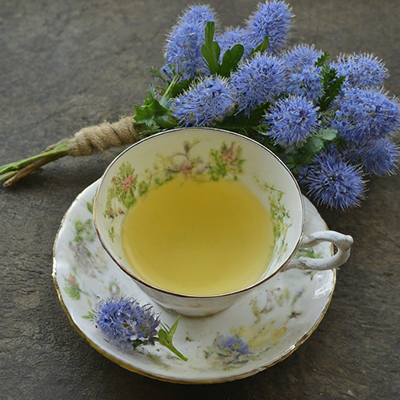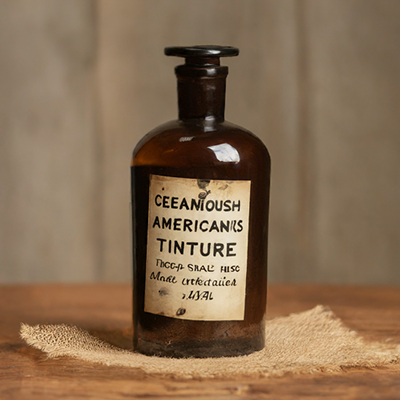Contents
North American natives have known New Jersey tea, or Ceanothus Americanus, as a homeopathic medicine since immemorial. The plant is also called New Jersey tea or red root. Perfectly integrated into their environment, the natives had already discovered the plant’s virtues, which the modern pharmaceutical industry has confirmed. Its leaves were used as a substitute for tea during the United States War for Independence.

Scientific Facts
- Scientific Name: Ceanothus Americanus L.
- Other Names: Jersey tea, mountain-sweet, red root, Walpole tea, wild snowball.
- Spanish: Té de Nueva Jersey, ceanoto.
- Environment: Common in fields and forests in North America and grown as an ornamental plant in Europe.
- Description: This shrub of the Rhamnaceae family grows from one to 1.5 m high. It has oval, sharp-tipped, finely toothed leaves and small, white, or bluish flowers extending from the leaves’ axillary buds.
- Parts of the plant used medicinally: The bark of the root.
New Jersey Tea Ceanothus Americanus

The bark of the root contains an alkaloid (ceanotine), tannin, resin, and traces of an essential oil. It is successfully used in the following cases:
- Mouth and throat afflictions: Pharyngitis, sore throat, oral aphthae (sores), and other irritations, locally applied in gargles and mouth wash-offs.
- Bronchial and lung afflictions: Bronchial catarrhs, cough, asthmatic bronchitis.
How to use
- Decoction with a spoonful of ground bark root per cup of water. Drink two or three cups daily.
- Rinses and gargles. The same decoction was employed for internal use, though slightly more concentrated.
Ceanothus Americanus Tea

Ingredients:
- 1 tablespoon dried Ceanothus americanus leaves
- 1 teaspoon dried peppermint leaves
- 1 teaspoon dried chamomile flowers
- Honey or lemon (optional, for flavor)
Instructions:
- Combine all the dried herbs in a tea infuser or teapot.
- Pour boiling water over the herbs.
- Let steep for 5-10 minutes.
- Strain the tea into cups.
- Add honey or lemon if desired.
- Enjoy this soothing and aromatic herbal blend.
Note: This tea blend combines the medicinal properties of Ceanothus americanus with the calming effects of peppermint and chamomile.
Ceanothus Americanus Tincture
Ingredients:

- Fresh or dried Ceanothus americanus roots
- 80-proof vodka or brandy
Instructions:
- Clean and chop the Ceanothus americanus roots into small pieces.
- Fill a clean glass jar halfway with the chopped roots.
- Pour the alcohol over the roots, making sure they are completely soaked.
- Seal the jar firmly and shake it gently.
- Store the jar in a cool, dark place for 4-6 weeks, shaking it occasionally.
- After the maceration period, strain the tincture through cheesecloth or a fine mesh strainer to remove the plant material.
- Transfer the tincture to amber glass dropper bottles for storage.
- Label the bottles with the contents and date.
Dosage:
Adults: Take 1-2 droppers (approximately 20-40 drops) of the tincture, diluted in water or juice, up to three times daily. Consult with a healthcare professional for applicable dosage and usage instructions.
Note: This tincture can support respiratory health and as a general tonic. It’s essential to start with a small dose, gradually increase if needed, and discontinue use if any adverse reactions occur.
DISCLAIMER: All content on this website is presented solely for educational and informational objectives. Do not rely on the information provided as a replacement for advice, diagnosis, or treatment from a qualified medical expert. If you are pregnant, nursing, or have any preexisting medical concerns, talk to your doctor before using any herbal or natural medicines.
REFERENCES
- George D. Pamplona-Roger, M.D. “Encyclopedia of Medicinal Plants.” George D. Pamplona-Roger, M.D. Encyclopedia of Medicinal Plants. Ed. Francesc X. Gelabert. Vols. 1 San Fernando de Henares: Editorial Safeliz, 2000. 191. Print. [Ceanothus Americanus Homeopathic Medicine Uses]
- Ji, L., & Ma, X. (2016). Research progress of traditional Chinese medicine in the treatment of nonalcoholic fatty liver disease. Chinese Journal of Integrated Traditional & Western Medicine on Liver Diseases, 26(7), 679-682.
- Phares, D. L. (1868). Ceanothus Americanus: Red Root, New Jersey Tea. Atlanta Medical and Surgical Journal, 9(3), 129-131. [invalid URL removed] (Old, but relevant for identifying original compounds)
- Baxter, H., Harborne, J. B., & Moss, G. P. (1999). Phytochemical dictionary: a handbook of bioactive compounds from plants. CRC press.
- Google Scholar: https://scholar.google.com/
- ScienceDirect: https://www.sciencedirect.com/
